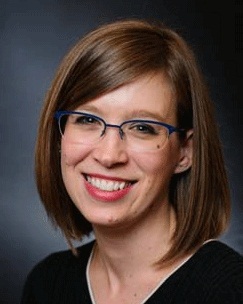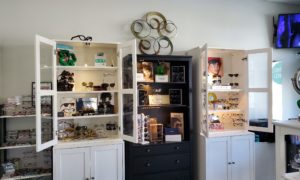By Rachael Click, OD
April 6, 2016
I pay less than $500 per month for my consultant, which, after I factor in my contribution margin, requires less than one-and-a-half patients a month to cover the expense. In exchange for that expense, my practice has grown more than 10 percent. Patient satisfaction, based on surveys, is higher, and revenue per patient is increasing quarterly. Other areas where we saw improvements include: production booked, capture rate, sales of annual supplies of contact lenses, Transitions sales and sunwear sales.
The help I’ve received from consultants in building my practice has been so positive, the only thing I would do differently is hire them sooner. I think consultants are great for all practices, but especially for one-doctor practices, as they are our direct mentor.
Hiring a Practice Consultant: Compute theROI
Business consulting tooptometric practices is a growing field, with services available from a variety of sources. For a typical one-OD practice with $600,000 in gross revenues, compute your costs in achieving revenue growth of 5 percent (+$30,000/year) or possibly 10 percent (+$60,000).
- Independent consultants: $500+/month,$6,000 annually
- Business building programs for entire staff (1-2 weeks): $30,000
- Optometric alliances withbusiness consulting programs: $300-$500 a month up to 4 percent of gross revenues
Making the Decision to Hire a Consultant
I was a very young, green and new OD when I decided to open Preferred EyeCare Center. I had worked for a private practice for about six months when I realized that I had a desire to be a business owner. However, I knew nothing about running a business.
During my fourth year of optometry school, the Williams Group came to my school and did a presentation about how to make recommendations, doctor-driven dispensing and how their services could help us all achieve our goals if we entered private optometry. At the time, I remember being very star struck about the potential, and specifically remembered thinking I wanted to eventually be a partner in a practice, but first wanted to just be a doctor and put my skills to work.
Six months into working in a private practice I realized that the ideas I had about patient care and running a practice were good ideas, were being implemented into the practice, making the practice money, but I wasn’t getting credit for my work. When I had the opportunity to open Preferred EyeCare Center, I knew I wanted to do it right and that I didn’t know what I didn’t know. I was totally naive, but knew I had a lot to learn. I immediately thought of the Williams Group and reached out to them. Once I learned about their services and how they could help me, I signed a one-year contract.
I had two consultants. The first one helped me make sure my business plan, lease and financing paperwork were in good standing. Once I was ready to start working on implementing my ideas about how I wanted to operate my practice, I started working with my current consultant, who taught me how to operate a business and how to set goals and how to work toward achieving those goals.
Track Numbers, See If Help is Needed
There were about five years that I didn’t have a consultant. I had graduated out of the Fast Start Program at the Williams Group and was doing great in the beginning. I was continuing to track numbers, keeping up with budgeting and meeting benchmarks. Then I felt like I was leveling off. I was starting to have questions about how to take my practice to the next level while maintaining what I was doing. I was starting to have questions that I honestly didn’t know how to answer because the questions didn’t fit a specific mold. That was when I knew I was going to need to hire a consultant again.
Shortly after I realized this, my current consultant reached out to me to check on how things were going, and to let me know that he was leaving Williams to start a new firm, Acquious Advisors. He said his firm was going to focus on tailoring its services to the needs of the individual practice, rather than having specific service programs to choose from.
Set Goals
We set goals based on the current objectives. What I mean by this is that when I first hired Acquious Advisors I was having some problems with staffing and leadership. They gave me some very specific feedback on how to handle these issues. These goals were based more on morale and feedback while keeping business statistics the same. Once these issues were resolved, we started focusing on growth and my current office space expansion project.
There are a few Excel spreadsheets that we use to monitor our goals. The first is a cash flow analysis sheet that tracks monthly business expenses. This tool allows me to track chair cost, staff productivity, cost of goods, fixed operating expenses, variable operating costs and pre-tax net. The other Excel spreadsheet tracks patient care statistics from production booked, shopper conversion, spectacle capture rate, Transitions capture rate, annual contact lens supply capture rate, sunglasses, etc.
Give Consultant Financial & Practice Information
When we first started working together, I gave the consultant the past year’s profit and loss statement, and the other statistics I was currently tracking. They used that data to determine my cash flow over the past year. Our meetings have always been in one-hour increments and we talk every 2-3 weeks. In the beginning, we talked every two weeks, and sometimes more often when I was modifying my business plan for the expansion.
Simple Changes Can Make a Big Difference
Some of the simplest and most complicated changes were going back to grass roots. We have different structures to our weekly business meetings, we have open door communication between staff and doctor, we track statistics and we order and prescribe the best products for the patient and the business.
Coordinate Goals & Plans with Practice Staff
My consultant and his associates are great about including the staff. When I first hired them, they gave my team a questionnaire that critiqued me and the practice. The consultants listen to our weekly business meetings as needed and introduce themselves to all new team members. They also will schedule individual phone calls with the staff to answer any questions they have.
Rachael Click, OD, is the owner of Preferred EyeCare Center in Mount Pleasant, S.C. To contact her: drclick@preferredeyecarecenter.com.



























